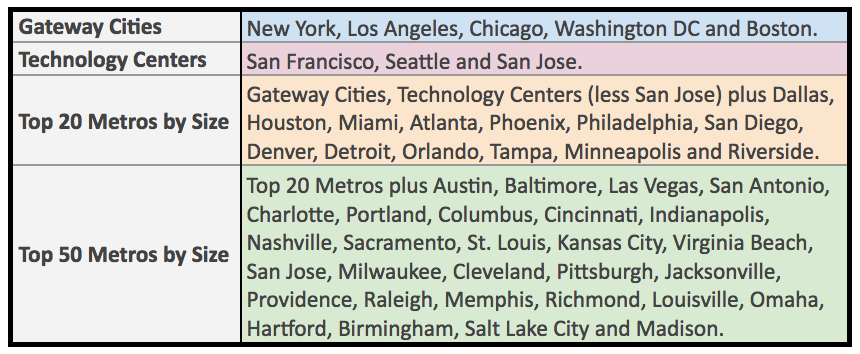Small Apartment Assets Benefit from Outsized Millennial Representation in Regional Markets

As primary markets get increasingly expensive for housing, young adults at the beginning of their careers are moving into regional hubs. This movement is providing new growth opportunities for small asset investments.
Millennial Demand is Divided Across Metro Segments
While the largest metros also offer the widest employment prospects for young adults, ever-increasing rents and relatively stagnant wages make a case for moving to more affordable destinations.
As shown below, the segmentation of Millennial demand within the Top 50 metros shows significant differences between asset class. (See the table at the bottom of the post for the names and classification of the metro areas.)
For a baseline, the overall Millennial population in the United States is distributed almost evenly across the three market size segments. However, they account for a slightly larger share in the regional markets (Next 15 Metros).
In contrast, millennial renters make up the greatest percent of small building renters in the Top 5 metros (37%), though large buildings in those markets have a higher percentage of millennials on their rent roll (47%).
The inverse is true in the Smallest 25 metros, where small buildings see an average millennial tenant share of 28%, compared to 18% of large buildings. Because these markets are more affordable, we can assume that millennials are more easily able to afford a home. In general, these smaller metro areas typically see a larger share of homeowners than the gateway markets.
So why might these smaller markets have more millennials in small properties than large assets? One hypothesis is that most of these smaller metros lack the 24 hour live, work, play centers and public transportation associated with major cities like New York, Miami and Chicago. If millennials are going to use a car to get to work and access entertainment anyways, their might as well enjoy the cheaper rents and larger unit footprints associated with smaller apartment properties outside of the core urban corridors.
For a look at the specific cities with outsized millennial representation in small buildings, be sure to check out this recent post here.


